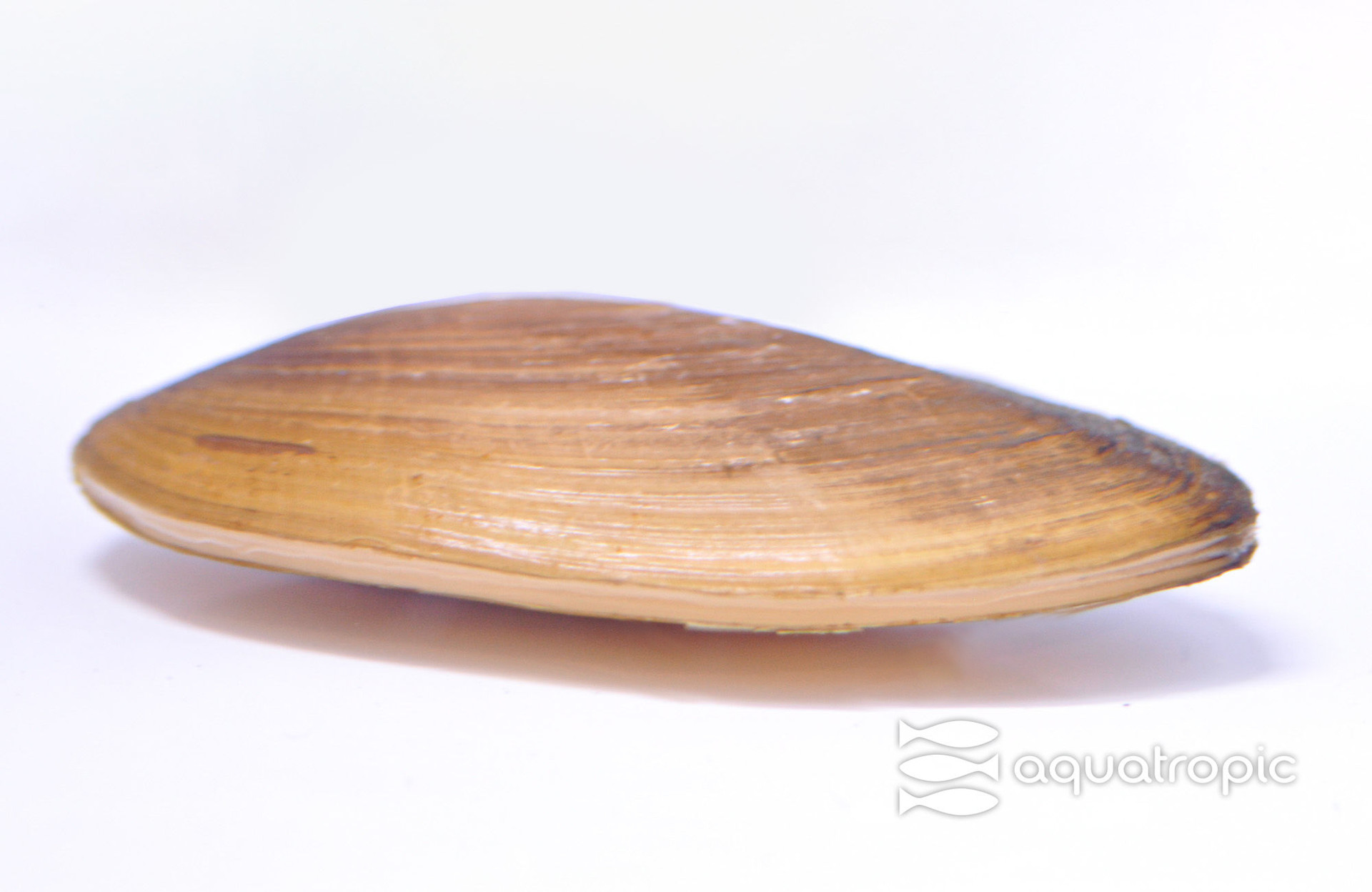The Mussel Masquerading as a Clam - Pilsbryoconcha exilis - Asian Gold

Pilsbryoconcha exilis is a freshwater mussel common throughout southeast Asia and the Sunda Islands. In the north American aquarium hobby, it is most often called the Asian Golden Clam, though abroad it also is commonly called The Tropical Swan Mussel or the Thai Aquarium Mussel. It is most commonly aquacultured and harvested for the aquarium market as it is reported to have a somewhat unpleasant taste. Like all other bivalves, the Golden Clam is a filter feeder and this is both its Achilles heel in the aquarium and one of its most endearing attributes. A single Golden Clam can take a 20 gallon aquarium with dirty, green water and have it shiny bright overnight. The downside here is the catch for keeping any mollusc in captivity. That dirty green water was the food the clam requires, now that the aquarium is clean, all the food is gone. To succeed long term in keeping clams, aquarium stability must be balanced with available food, and different aquarists accomplish this in different ways. Some people densely stock and feed heavily resulting in a quite a lot of suspended food available for the clam. The downside to this is that bivalves are sensitive to water quality issues and swings, and feeding and stocking this way can cause nitrogen spikes unless the system is robustly filtered and very stable. Another method frequently seen is to add Golden Clams to aquariums that are densely planted; the plants will slough dead material and offer surface area for bacterial growth; the dead plant material and the bacteria / algae growing in the aquarium will be consumed by the mussel. The catch here is that the Asian Golden Clam moves around and burrows through substrate (usually at night) and thus will uproot many plants in its wandering. Many aquarists report having success target feeding the clams a slurry of fine particle foods. This seems to work well long term, but can be labor intensive.
When shopping for any kind of freshwater bivalve you'll see the dreaded label: “Experts Only.” The above paragraph should display why pretty well, the balance of water quality and available food is tricky. Other than that, keeping clams and mussels is pretty straightforward. Water parameters are run of the mill: temperature between 70°-85°F, no ammonia, no copper and pH is important as acidic conditions will result in shell degradation, keep it in the 7-8 range. Flow in the aquarium should be good, but not laminar (don't blast them directly with a powerhead). They also need a soft substrate to dig and move around in, think medium to superfine. This digging is the other reason experts are recommended. Most bivalves will nearly completely bury themselves, so when they die (most only live a year or two) they are buried and thus hard to find and can take out a whole aquarium with the resulting ammonia spike. The Golden Clam is unique in that it keeps most of its shell out of the substrate, making it much easier to monitor for problems than most other aquarium bivalves.
All in all the Asian Golden Clam is one of the best choices for those of you interested in keeping freshwater bivalves (even though it is actually a mussel). They are handsome and hardy as long as there aren't large swings in water quality, and they have a consistent supply of food. Make sensible choices about tankmates (like don't house them with freshwater puffers who will eat them) and your clam should live out it's 1-3 year life being super useful filtering your tank water and looking sharp! Ask your LFS about getting you one from Aquatropic today!